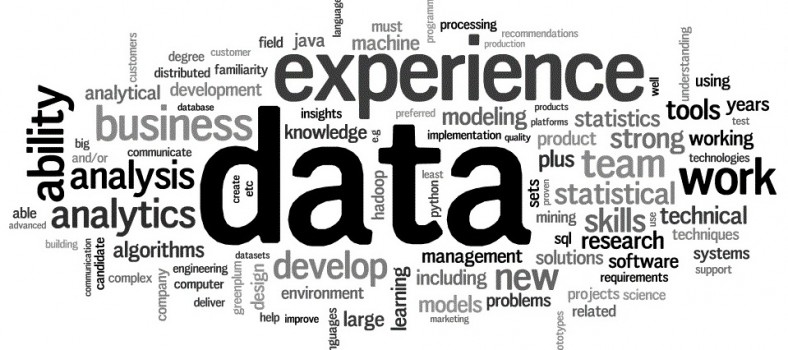A new discipline emerges to support improved performance and growth
In the current business environment, with data proliferating and demand for data analytics growing, many organizations are seeking direction on what data they should be accumulating, how to obtain and integrate the data and best practices for harnessing the data to generate business insights. That last aspect is key, because analyzing data without creating insights for solving a business problem relegates the work to an academic exercise.
The imperative to embrace data and analytics is one reason why forward-thinking organizations are seeking analytics-based consulting assistance. Unlike management consultants that specialize in developing techniques for dealing with problems, analytics consultants collect, organize and interpret data to execute and evaluate solutions. Traditional management consultants may recognize the value of data and analytics, but they do not have the expertise to offer their clients specific recommendations on how to leverage internal and external data sources to improve performance and become data-driven organizations.
While many companies are getting pieces of the process right, many more are challenged with bringing all the components together so they can realize the full value of their data and analytics efforts. Organizations big and small, in all industries and sectors, voice similar concerns:
- Lots of data but difficulty uncovering insights from them;
- No clear roadmap or analytics strategy;
- Lack of appropriate data structures;
- Unable to convert insights into meaningful action;
- Unsure how to obtain corporate alignment and C-suite buy-in; and/or
- Undisciplined reporting and measurement make it difficult to develop a solid business case.
Solving these challenges to develop evidence-based decision making is not an easy task. It requires bringing together people from different disciplines, with different skill sets and extensive experience in their craft—a scenario that’s uniquely suited to an analytics-based consulting team. Whether the project requires strategy, implementation, measurement or all three areas, an interdisciplinary consulting team can help organizations turn analytics into a competitive advantage, as highlighted in the examples that follow.
Streamlining not-for-profit operations
Ottawa-based Canadian Blood Services’ mission—to manage a safe, secure and cost-effective blood system—was being challenged by budget constraints and operational inefficiencies. Administrators turned to analytics to improve performance. But first they needed to develop a strategic analytics roadmap that would help them leverage its wealth of data in order to optimize its marketing costs and still achieve its blood collection targets to meet the public demand.
The roadmap project began with a transformational needs assessment that involved documenting Canadian Blood Services’ current abilities, infrastructure and resources; identifying gaps and risks; and determining the steps necessary to integrate analytics into its operations. As an analytics-based consulting team from Environics Analytics helped guide them through the assessment, a specific project was identified that could help demonstrate the value of the analytics roadmap initiative and the opportunities it offered.
The goal of the project was to identify ways of reducing inefficiencies and costs in blood donations. The consulting team reviewed existing reports and analyzed current performance, focusing on donor appointments, cancellations and no-shows as well as those who arrived and gave blood as scheduled. The analysis also included an environmental scan of work performed in other markets and reviewed other industries to look for potential solutions that might help Canadian Blood Services.
In a series of business discovery and alignment sessions, Canadian Blood Services’ stakeholders identified specific information goals they wanted the initiative to achieve, such as:
- Identify donor patterns and score the value of each donor;
- Predict attendance at events and forecast donor attendance; and
- Increase retention rate and reduce the time between collections.
The feedback helped define the group’s needs and also revealed some organizational challenges. “We have lots of platforms, spreadsheet reports and dashboards,” one participant noted. “But how do they come together and what are the insights?” Another asked, “What are the missing pieces of data in the organization?”
The analysis allowed the team to validate Canadian Blood Services’ high-level analytics requirements that would help it achieve overall goals as well as specific improvements in the blood donation process. Among the key performance indicators identified: a predictable appointment flow, consistent blood supply for everyone and operational efficiencies for budget control. Other goals of the broader analytics strategy included managing donor assets, creating value in donor experiences, enforcing requirements of core infrastructure and supporting an analytics culture.
The team then produced an analytics roadmap that identified and prioritized opportunities that would enable Canadian Blood Services to achieve its goals. Among the recommendations:
- Leverage models to improve retention of active donors.
- Develop models to improve “win back” rate of lapsed donors.
- Develop models to identify those who have potential to give more units per year.
- Create onboarding strategy for new donors to encourage the habit of giving blood.
Finally, the team developed a number of business models that showed how even small improvements in donor no-show and cancellation rates would have a big impact on blood collections and cost reductions. Quantifying the benefits of the analytics-based solution was an important element in gaining senior leadership approval. The roadmap document also included a list of short-term (one to six months), mid-term (six to 12 months) and long-term (over a year) activities Canadian Blood Services could do to achieve its goals.
“Part of the challenge involves our executives wanting to know the ROI of analytics,” says Tony Steed, director of market knowledge and donor insights at Canadian Blood Services. “The project showed ways we could generate several million dollars in savings, according to predictive modelling. There’s potential all over the place, but we have to prove that first.”
Higher analytics education
Another example of analytics-based consulting involved the alumni office of a university—though it could just have easily been a financial services company or a retailer. The university was struggling with how to measure the impact of customer—or in this case “alumni”—engagement on the organization.
Working collaboratively with the school’s internal business and data analytics teams, a consulting project team reviewed how the office measured engagement. Metrics included email openings, click-throughs and participation rates, as well as alumni attitudes and feelings toward the university brand. While these are meaningful metrics, none were directly related to the financial goals of the alumni office. The team worked with key stakeholders to gain consensus on what metrics they should be concerned with, how these metrics would be calculated and what data were required to assess the results.
The project team’s analysis led to a series of reports that demonstrated the impact of alumni engagement on donor value, retention and satisfaction. The team produced similar reports based on key lifestage segments that had been determined previously by the client.
The consulting team also calculated expected return on investment associated with engagement levels. Engaged alumni, according to the assessment, were shown to be ten times more valuable to the university in terms of donations received than unengaged alumni—thus demonstrating the incremental value of increasing alumni engagement levels through social and academic events. With this analysis in hand and the new and improved reporting and measurement methodology, administrators were able to justify and optimize the cost of their alumni engagement efforts.
Automotive in the driver’s seat
But if there is one industry where analytics-based consulting offers considerable value it’s the automotive industry. Auto dealers and manufacturers spend a lot of money on advertising and customer management, and they have access to a lot of data and many touchpoints along their sales and support cycle. But in today’s very competitive and very mature market, it is difficult to know which triggers are most influential in a consumer’s purchasing decision and which channels offer the best return on investment.
To gain insight on the touchpoints that may be most relevant for sales, an analytics-based consulting team recommended a data audit and development of dashboard reporting capability, which would make it easier to analyzing the impacts of various touchpoints. The dashboard would provide a foundation for analysts to develop a suite of models to better understand relationships within the data and how they impact business. For example, a sales attribution model can help marketers understand the relationship between various advertising and marketing channels, and a predictive model can assist with forecasting sales for a specific time period.
These examples demonstrate how analytics-based consulting can help organizations in a wide range of industries and sectors further their analytics strategies for improved performance and reduced costs. And by demonstrating how relatively inexpensive initiatives can produce clear returns on investment, analytics consultants help create champions within client organizations. Their value is not just in illustrating the power of analytics but in helping an organization achieve its goals. If you need to justify an investment in analytics to senior executives, you’ll find that working with an analytics consulting team can deliver results as well as true believers.
This article originally appeared in the October 2017 issue of Direct Marketing.




No Comment